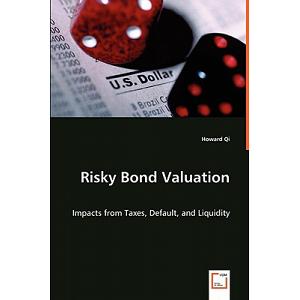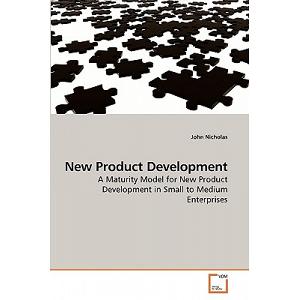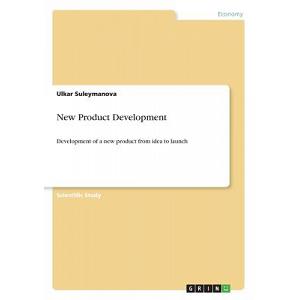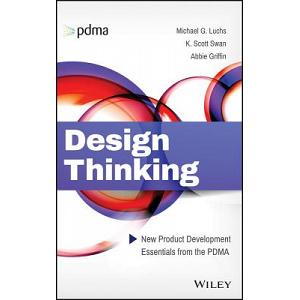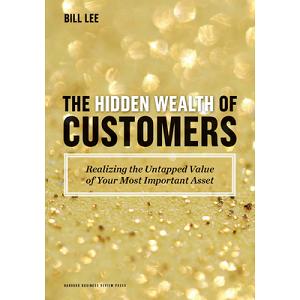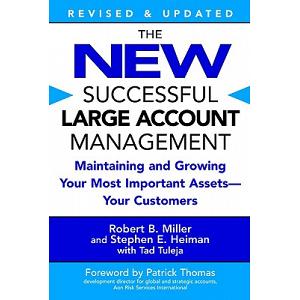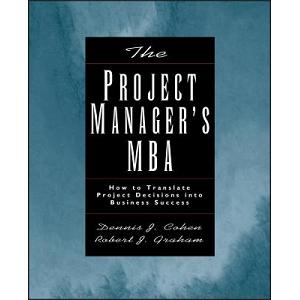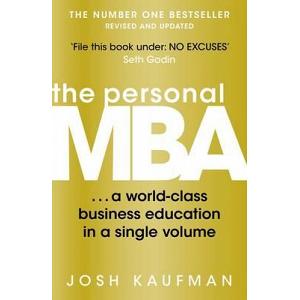The Bradley School of Business at Mount Perry College began its MBA program 16 years ago. The Bradley School is smaller and less well known than the Ritter College. Bradley offers an accelerated, one – year program, with a tuition cost of $80,000 to be paid upon matriculation. Books and other supplies for the program are expected to cost $4,500. Ben thinks that he will receive an offer of $92,000 per year upon the graduation, with an $18,000 signing bonus. The salary at this job will increase at 3.5 % per year. His average tax rate at this level of income will be 29 %.
Both schools offer a health insurance plan that will cost $3,000 per year, payable at the beginning of the year. Ben also estimates that room and board expenses will cost $2,000 more per year at both schools than his current expenses, payable at the beginning of each year. The appropriate discount rate is 6.5 percent.
1. How does Ben’s age affect his decision to get an MBA?
My opinion, Age is one of the important factor that affects someone decision to continue study. In this case, Ben is now 28 years old. He graduated from college six years ago when he’s age is 22 years old. Assuming that Ben already working for about 5 years since graduated from college, so that he would have enough money from salary saving in 5 years to do his MBA at 28 years age. If he starts the MBA program on 28 years old, he will spend two years for study and perhaps finish his MBA at 30 years old. At 30 years old, he will start working again for 40 more years after getting the MBA. With those reasons, age affects his decision for getting an MBA.
2. What other, perhaps no quantifiable factors affect Ben’s decision to get an MBA?
My opinion is there are several non quantifiable factors affect Ben’s decision to get an MBA. First, I think when assuming that Ben already working for about 5 years since graduated from college. he has job experiences as the MBA program usually put the requirement to the candidates at least having two years experiences in his respective field. Second, I think the current family situation. If he married with or without children, this will affect Ben’s decision because spouse or children supporting is also important. The third is his willingness to continue the study. If he eager to continue the study, he will continue the study. But if he has no willingness to study, he could do anything else, for example having jobs that would pay more or open the business.
3.Assuming all salaries are paid at the end of each year, what is the best option for Ben – from a strictly financial standpoint?
I think there are three options have to be calculated:
1. Keeping his current work for 40 years
There are several factors to be considered to calculate the present values (PV) of the first options are: His annual salary at the firm is $60,000 per year, and his salary expected to increase at 3 % per year until retirement, his current average tax rate is 26 % and discount rate is 6.5 percent.
In this case, to get the present value (PV), we can use the formula of growing annuity.
Salary = $60,000, tax rate = 26%, because of tax rate, c = $44,400
R (discount rate) = 6.5%
G (growth rate) = 3%
T (the number of period working) = 40
So the PV is = $ 937,474.28
Present Value (PV) of Growing Annuity.
PVGA = C (1 – ( (1+g)/(1+r))t / r – g )
PVGA= $44 400 (1 – ((1+3%)/(1+6.5%))40 / 6.5% - 3%)
PVGA = $44 400 (1 – ((1.03)/(1.065))40 / 0.035)
PVGA = $ 44 400 (1 – 0.261 / 0.035)
PVGA = $44 400 (0.739 / 0.035)
PVGA = $44 400 (21.114)
PVGA = $ 937,474.28
2. Getting the MBA at Wilton University
In this case, must compute 4 parts:
A. PV of salary for 38 years (40 – 2 years)
B. PV of signing bonus
C. PV of costs for 2 years (tuition, books and supplies, health insurance and rent fee)
D. PV of 2 years salary when he would work at the money management firm.
A. PV of salary for 38 years
The factors to consider are: He will receive a job offer for about $110,000 per year, with a $20,000 signing bonus. The salary at this job will increase at 4 % per year. Because of the higher salary, his average income tax rate will increase to 31 %.
Salary = $110,000, tax rate = 31%, so, C = $75,900
R (discount rate) = 6, 5%
G (growth rate) = 4%
T (the number of period working) = 38 (40 years – 2 years)
So the PV is = $ 1,806,116.4
Present Value (PV) of Growing Annuity.
PVGA = C (1 – ( (1+g)/(1+r))t / r – g )
PVGA = $75 900 (1 – ( (1+4%)/(1+6.5%))38 / 6.5% - 4%)
PVGA = $75 900 (1 – ((1.04)/(1.065))38 / 0.025)
PVGA = $75 900 (1 – (0.9765)38 / 0.025)
PVGA = $75 900 (1 – (0.40508) / 0.025)
PVGA= $75 900 (0.5949/0.025)
PVGA = $75 900 (23.796)
PVGA = $ 1,806,116.4
B. PV of signing bonus
The factors to consider are:
Signing bonus = $ 20,000
R (discount rate) = 6, 5%
T (the number of period working) = 38
So the PV is = $17,633.57
PV = FV / (1+r)t
PV = $20 000 / (1.065)38
PV = $20 000 / 1.1342
PV = $17,633.57
C. PV of cost for years ((tuition, books and supplies, health insurance and rent fee)
The factors to consider are: tuition $65,000, Books and other supplies are estimated to cost $3000 per year. Health insurance plan that will cost $3,000 per year, room and board expenses will cost $2,000.
Cost = $65 000 + $3000 + $3000 + $2000 = $ 73 000
R (discount rate) = 6, 5%
T (the number of period studying) = 2
So the PV is = $ 132,860
Present Value (PV) of Annuity:
PVA = c ( 1 – (1/(1+r)t / r )
PVA = $73 000 ( 1 – (1/(1.065)2 / 6.5%)
PVA = $73 000 ( 1 – (1/1.1342 / 0.065)
PVA = $73 000 (1 – 0.8817 / 0.065)
PVA = $73 000 (0.1183 / 0.065)
PVA = $73 000 (1.82)
PVA = $ 132,860
D. PV of 2 years salary when he would work at the money management firm.
The factors to consider are: His annual salary at the firm is $60,000 per year, and his salary expected to increase at 3 % per year until retirement, his current average tax rate is 26 % and discount rate is 6.5 percent.
Salary = $60,000, tax rate = 26%, because of tax rate, c = $44,400
R (discount rate) = 6.5%
G (growth rate) = 3%
T (the number of period working) = 2
So the PV is = $82,076.51
Present Value (PV) of Growing Annuity.
PVGA = C (1 – ( (1+g)/(1+r))t / r – g )
PVGA = $44 400 (1 – ((1+3%)/(1+6.5%))2 / 6.5% - 3%)
PVGA = $44 400 (1 – ((1.03)/(1.065))2 / 0.035)
PVGA = $44 400 (1 – 0.9353 / 0.035)
PVGA = $44 400 (0.0647/0.035)
PVGA = $44 400 (1.8486)
PVGA = $82,076.51
3. Getting the MBA at Mount Perry College
In this case, must compute 4 parts:
A. PV of salary for 39 years (40 – 1 years)
B. PV of signing bonus
C. PV of costs for 2 years (tuition, books and supplies, health insurance and rent fee)
D. PV of 1 years salary when he would work at the money management firm.
A. PV of salary for 39 years
The factors to consider are: he will receive an offer of $92,000 per year upon the graduation,. The salary at this job will increase at 3.5 % per year. His average tax rate at this level of income will be 29 %.
Salary = $ 92,000, tax rate = 29%, so, C = $ 65,320
R (discount rate) = 6, 5%
G (growth rate) = 3, 5%
T (the number of period working) = 39
So the PV is = $1,463,821.2
Present Value (PV) of Growing Annuity.
PVGA = C (1 – ( (1+g)/(1+r))t / r – g )
PVGA = $65 320 (1 – ((1+3.5%)/(1+6.5%))39 / 6.5% - 3.5%)
PVGA = $65 320 (1 – 0.3277/ 0.03)
PVGA = $65 320 (0.6723/0.03)
PVGA = $65 320 (22.41)
PVGA = $1,463,821.2
B. PV of signing bonus
The factors to consider are:
Signing bonus = $ 18,000
R (discount rate) = 6, 5%
T (the number of period working) = 39
So the PV is = $ 15,870.22
PV = FV / (1+r)t
PV = $18 000 / (1.065)39
PV = $18 000 / 1.1342
PV = $15,870.22
C. PV of cost for 1 years ((tuition, books and supplies, health insurance and rent fee)
The factors to consider are: tuition $ 80,000, Books and other supplies for the program are expected to cost $4,500. Health insurance plan that will cost $3,000 per year, room and board expenses will cost $2,000.
Cost = $ 89,500
R (discount rate) = 6, 5%
T (the number of period studying) = 1
So the PV is = $84,033.34
Present Value (PV) of Annuity:
PVA = c ( 1 – (1/(1+r)t / r )
PVA = $89 500 ( 1 – (1/(1+6.5%)1 / 6.5% )
PVA = $89 500 (0.06103 / 0.065)
PVA = $89 500 (0.93892)
PVA =$84,033.34
D. PV of 1 year’s salary when he would work at the money management firm.
The factors to consider are: His annual salary at the firm is $60,000 per year, and his salary expected to increase at 3 % per year until retirement, his current average tax rate is 26 % and discount rate is 6.5 percent.
Salary = $60,000, tax rate = 26%, because of tax rate, c = $44,400
R (discount rate) = 6.5%
G (growth rate) = 3%
T (the number of period working) = 1
So the PV is = $41,736
Present Value (PV) of Growing Annuity.
PVGA = C (1 – ( (1+g)/(1+r))t / r – g )
PVGA = $44 400 (1 – ((1+3%)/(1+6.5%))1 / 6.5% - 3%)
PVGA = $44 400 (1 – 0.9671 / 0.035)
PVGA = $44 400 (0.0329 / 0.035)
PVGA = $44 400 (0.94)
PVGA = $41,736
So the best option for Ben Bates is getting the MBA at Wilton University. He will receive more money after finishing the study and get salary and signing bonus with total present value $1 823 749.97. The present value study expenses at Wilton University (tuition, books and supplies, health insurance and rent fee) is $132 860 and the present value study expenses at Mount Perry College (tuition, books and supplies, health insurance and rent fee) is $84 033.34. Since Ben has savings account with enough money to cover the entire cost of his MBA program, it is the best option for him to get the MBA at Wilton University
4. Ben believes that the appropriate analysis is to calculate the future value of each option. How would you evaluate this statement?
1. Keeping his current work for 40 years
There are several factors to be considered to calculate the future values (FV) of the first options are: His annual salary at the firm is $60,000 per year, and his salary expected to increase at 3 % per year until retirement, his current average tax rate is 26 %.
In this case, to get the present value (PV), we can use the formula of growing annuity.
Salary = $60,000, tax rate = 26%, because of tax rate, c = $44,400
G (growth rate) = 3%
T (the number of period working) = 40
So the FV is = $11,639,750.53
FV = PV x (1+r)t
FV = $937 474.28 (1.065)40
FV = $937 474.28 (12.416)
FV = $11,639,750.53
2. Getting the MBA at Wilton University
In this case, must compute 4 parts:
A. FV of salary for 38 years (40 – 2 years)
B. FV of signing bonus
C. FV of costs for 2 years (tuition, books and supplies, health insurance and rent fee)
D. FV of 2 years salary when he would work at the money management firm.
A. FV of salary for 38 years
The factors to consider are: He will receive a job offer for about $110,000 per year, with a $20,000 signing bonus. The salary at this job will increase at 4 % per year. Because of the higher salary, his average income tax rate will increase to 31 %.
Salary = $110,000, tax rate = 31%, so, C = $75,900
G (growth rate) = 4%
T (the number of period working) = 38
So the FV is = $19,771,099.95
FV= PV x (1+r)n
FV = $1 806 116.4 (1.065)38
FV = $1 806 116.4 (10.94674)
FV = $19,771,099.95
B. FV of signing bonus
The factors to consider are:
Signing bonus = $ 20,000
G (growth rate) = 0 %
T (the number of period working) = 38
So the FV is = $ 20,000.43
FV = PV (1+r)n
FV = $17 633.57 (1.065)2
FV = $20,000.43
C. FV of cost for 2 years college
FV = PV (1+r)n
FV = $132 860 (1.065)2
FV = $ 150,693.13
D. FV of 2 years salary when he would work at money management firm
FV = PV (1+r)n
FV = $82 076.508 (1.065)2
FV = $93,093.23
3. Getting the MBA at Mount Perry College
In this case, must compute 4 parts:
A. FV of salary for 39 years (40 – 1 years)
B. FV of signing bonus
C. FV of costs for 2 years (tuition, books and supplies, health insurance and rent fee)
D. FV of 1 years salary when he would work at the money management firm.
A. FV of salary for 39 years (40 – 1 years)
The factors to consider are: he will receive an offer of $92,000 per year upon the graduation,. The salary at this job will increase at 3.5 % per year. His average tax rate at this level of income will be 29 %.
Salary = $ 92,000, tax rate = 29%, so, C = $ 65,320
G (growth rate) = 3, 5%
R = 6.5%
T (the number of period working) = 39
So the FV is = $17,065,646.13
FV = PV (1+r)n
FV = $1 463 821.2 (1.065)39
FV = $17 065 646.13
B. FV of signing bonus
The factors to consider are:
Signing bonus = $ 18,000
G (Growth rate) = 0%
T (the number of period working) = 39
So the FV is = $ 18,000.40
FV = PV (1+r)n
FV = $15 870.22 (1.065)2
FV = $ 18,000.40
C. FV of costs for 2 years (tuition, books and supplies, health insurance and rent fee)
FV = PV (1+r)n
FV = $84 033.34 (1.065)
FV = $ 89,495.50
D. FV of 1 years salary when he would work at the money management firm.
FV = PV (1+r)n
FV = $44 400 (1.065)1
FV = $47,286
By calculate the future value of each option: The present value of his salary $937,474.28 is equal to future value $11,639,750.53 when keeping his current work for 40 years. The present value of salary $1,806,116.4 is equal to future value $ 19,771,099.95 plus $ 20,000 signing bonus when having a job for 38 years after getting the MBA at Wilton University. The present value of salary $1,463,821.2 is equal to future value $17,065,646.13 plus $18,000 signing bonus when having a job for 39 years after getting the MBA at Mount Perry College. The best choice is he having study at Wilton University.
5. What initial salary would Ben need to receive to make him indifferent between attending Wilton University and staying in his current position?
Staying in his current position, PV 1 = $937,474.28
Getting the MBA at Wilton University, PV2 = $ 1,804,927.68
When PV1=PV2
21,06C1 = $75,900 * 23,78
21, 06 C1 = $ 1 806 116.4
C1 = $85,760.51
The amount $ 85,760.51 already deducted with 26% taxed, the salary before tax deduction is $ 108,508.2. So, the initial salary would Ben need to receive to make him indifferent between attending Wilton University and Staying in his current position is $108,508.2
6. Suppose, instead of being able to pay cash for his MBA, Ben must borrow the money. The current borrowing rate is 5.4%. How would this affect his decision?
There are two options:
1. Getting the MBA from Wilton University
Ben Bates must borrow $146,000 to get the MBA at the Wilton University for two years. The current borrowing rate is 5, 4%. Assuming he pay out the principal plus interest every year for five years:
Loan amount : $146,000
Interest rate : 5, 4%
Long term : 5
Loan payment : $ 34.096,06
Amortization table 1.0:
| beginning balance | total payment | interest paid | principal paid | ending balance |
1 | 146.000,00 | 34.096,06 | 7.884,00 | 26.212,06 | 119.787,94 |
2 | 119.787,94 | 34.096,06 | 6.468,55 | 27.627,51 | 92.160,43 |
3 | 92.160,43 | 34.096,06 | 4.976,66 | 29.119,40 | 63.041,04 |
4 | 63.041,04 | 34.096,06 | 3.404,22 | 30.691,84 | 32.349,19 |
5 | 32.349,19 | 34.096,06 | 1.746,86 | 32.349,20 | (0,01) |
| Totals | 170.480,30 | 24.480,28 | 146.000,01 |
|
The total payment in five years is $170.580,30. Then, when we calculated the present value with discount rate 6,5% and period five years:
C = $170.580,30
R (discount rate) = 6, 5%
T (the number of period) = 5
So the PV is = $ 708,875.80
2. Getting the MBA from Mount Perry College
Ben Bates must borrow $ 89,500 to get the MBA at the Mount Perry College for one year. The current borrowing rate is 5, 4%. Assuming he pay out the principal plus interest every year for five years:
Loan amount : $89,500
Interest rate : 5, 4%
Long term : 5
Loan payment : $ 20.901,35
Amortization table 1.1:
| beginning balance | total payment | interest paid | principal paid | ending balance |
1 | 89.500,00 | 20.901,35 | 4.833,00 | 16.068,35 | 73.431,65 |
2 | 73.431,65 | 20.901,35 | 3.965,31 | 16.936,04 | 56.495,61 |
3 | 56.495,61 | 20.901,35 | 3.050,76 | 17.850,59 | 38.645,02 |
4 | 38.645,02 | 20.901,35 | 2.086,83 | 18.814,52 | 19.830,50 |
5 | 19.830,50 | 20.901,35 | 1.070,85 | 19.830,50 | 0,00 |
| Totals | 104.506,75 | 15.006,75 | 89.500,00 |
|
The total payment in five years is $104.506,75. Then, when we calculated the present value with discount rate 6,5% and period five years:
C = $104.504,75
R (discount rate) = 6, 5%
T (the number of period) = 5
So the PV is = $ 434,293.44
From the table 1.0, the total payment is 170.480,30 is equal with present value $ 708,875.80. From table 1.1, the total payment is 104.506,75 is equal with present value $ 434,293.44. These will affect his decision to continue study. From strictly financial standpoint, if Ben must borrow the money with current rate 5,4%, he is still can continue the study at Wilton University. Another alternative is that if he is not continue the study, Ben need to receive an initial salary around $107.961,78 to make him indifferent between attending Wilton University and staying in his current position.
Note: Looking forward your feedback, please E-mail us to selviautama@gmail.com or message to +62 811 680 4542
Source:case study "The MBA Decision" from chapter 4, Corporate Finance Book, Stephen A.Ross, Randolph W.Westerfield and Jeffrey Jaffe, Ninth Edition.